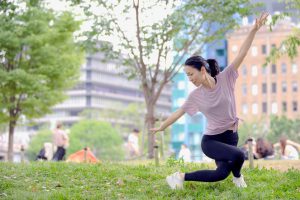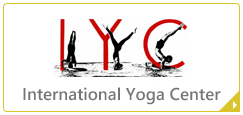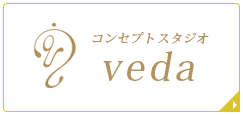ブログ
| ブログ
Facebookにて、私たちの本家本元、ビクター先生率いるYIN YOGA in ASIAの投稿を、Yin Yoga Japanの川畑友季湖先生が日本語訳してくださったものをここでもシェアさせていただこうと思います。
友季湖先生の承諾を得て掲載しています。
Yin Yoga Japan
公式ホームページは→こちら
公式Facebookページは→こちら
—
陽ヨガのバランスをとるために陰ヨガを練習する、ということについて。
これは本当に正しい方向性のアイディアなのでしょうか。
「陽に傾きすぎたから、陰を」という言葉を初めて陰ヨガにきた方から聞きますが
陰陽論をきちんと学べば学ぶほど、その考え方へは疑問がわきます。
ぜひ読んで、みなさん自身で考えてみてください。
—
(転載ここから)
↓↓↓
YIN YOGA in ASIAの投稿より第三弾、日本語にて転載します。
陰ヨガと陽ヨガを別々に考えて練習するアイデアは必要でしょうか。『陽ヨガを練習しているからバランスをとるために陰ヨガをする。』という練習方法は理に叶っているでしょうか。古代中国より伝わってきた理論とムーブメントの考察を以下にご紹介します。
(無断転用はお断り致します。ページのシェアは歓迎致します。)
———————————————————–
あなたは陰ヨガと一緒に陽ヨガを練習しようと思いますか?
多くの人があなたは陰ヨガを行うべきであると主張します。なぜなら、すべてのダイナミックなヨガとヴィンヤサ(いわゆる陽ヨガ)はあまりにも多くのこわばりや筋肉の硬さを生み出します。したがって、それを補完するには陰ヨガが必要で、陰ヨガの練習を通して身体が柔らかくなり、もっと弾力性を生み出す必要があります。
– この考えは本当にあなたが陰ヨガを必要とする理由ですか?
問題は、もし誰かが陽ヨガであまりにも多くの筋肉を使う努力をしているというのであれば、なぜこのようにして、アンバランスを生み出してまで体を動かし続けているのか、ということです。
陰ヨガは、他のヨガスタイルを補完するようには作られていません。
陰ヨガは、陰と陽の両方の要素で完全に動作する独立した練習で、あらゆる動きに柔らかさを生み出すことを重視しています。最も困難なポーズに直面した場合でも、どうすれば最小限の努力で取り組むことができるか。これが陰ヨガの持ち味です。難しいポーズのときに、より筋肉質なエンゲージメントに反応せずに、柔らかいアプローチを続けることはできるでしょうか。道教はこれを陰の中の陽と呼んでいます。同様に、ダイナミックな練習をするときは、動きを完成させるためにより柔らかく、より少ない労力で行う必要があります。これが陽の中の陰と呼ぶものです。
陰陽のバランスは、あらゆる運動の実践において重要な考慮事項であるべきです。私たちは柔軟性やまたその逆に力だけで練習をするべきではありません。アイデアは完全であり、ひとつの練習の中で陰と陽の調和の状態を維持します。 異なる2つの別々のやり方ではありません。片方が陰でもう片方が陽であれば、これは明らかに不均衡なアプローチです。
例として太極拳を見てみましょう。それは中国で、その他のダイナミックな武道のスタイルを補完するために開発されたものではありませんでした。それ自体で完全なシステムであり、柔らかさで動きにアプローチすることに大きな焦点が置かれています。太極拳では相手を攻撃したときの強さの度合いは外からは想像できません。太極拳で自分の強さを外に出すことは、『發勁』として知られています。それは手だけではなく全身で行います。力は床から脚を通り、腕を通って出ています。 發勁は身体が全体的なユニットとして調整されているときにのみ起こり得ます。そしてそれは筋膜ネットワーク上全体に力の伝達の効力がなければならないことを意味します。体が繋ぎ合って柔らかいままであるときだけ、發勁が起こります。その練習は、柔らかさそれ自体がその対戦相手に対して破壊的な力を生み出すことができるという風に見えます。
陰ヨガはここからインスピレーションを得て、身体のあらゆる行動において柔らかさを可能にする動きを作り出します。私たちがこのように動くことができるとき、私たちはすべての挑戦的なポーズを行うために心地よさを尊守することができるでしょう。
Are you suppose to practice a Yang Yoga along side with Yin Yoga?
Many people argue that you should do yin yoga because all the dynamic yoga and vinyasa (so called Yang Yoga) create too much stiffness and muscular engagement. Therefore, you need Yin Yoga to complement it. You need to learn to become soft and create more elasticity in your body with Yin practice. Is this really the reason why you need Yin?
The question is, if someone knows that he is engaging too much muscular effort in Yang Yoga, why does he continue to work the body this way Why is he allowing himself to create all the imbalances by doing it this way?
Yin Yoga is not created to compliment any other yoga style. Yin Yoga is an independent practice which is complete with both Yin and Yang component with the emphasis of creating softness in all movement. How can one continue to engage with minimal effort even when faced with most challenging pose? This is the tenant of Yin Yoga. Can you not react with more muscular engagement when the pose are getting difficult and continue with a soft approach in moving the body? Taoist call this Yang within Yin. Like wise, when doing a dynamic practice, one should consider how to do it with more softness with less effort to complete the movement. This what call Yin within Yang.
Yin-Yang balance should be the key consideration in any movement practice. We should not be training only strength without flexibility or vice verse. The idea is to be complete and maintain the state of harmony between Yin and Yang within a Single practice. Not two separate practices. If one practice is Yin and the other is Yang, this is obviously an imbalance approach.
Let’s look at Taiji as an example. It was not developed to complement another dynamic style of martial arts in China. It is a complete system by itself with a big focus on approaching movement with softness. When we look at Taiji, we will not imagine the amount of strength that could be externalise when attacking an opponent. Externalising one’s strength in Taiji is known as “Fa-Jing” . It involved the full body and not just the hand. The strength is coming from the floor via the legs and out through the arms. Fa-Jing can only happen when the body is able to co-ordinate as a whole unit and that means there must be efficiency of force transmission over the entire fascia network. Only when the body remains soft in its engagement can Fa-Jing happens. The practice seemingly soft can create destructive force to his opponent due to softness itself.
Yin Yoga takes inspiration from this understanding to create movement that allows one to engage with softness in all actions of the body. When we are able to work in this way, we will be able to abide with comfort for all challenging poses.
Photography by WHITE LOTUS OSAKA
↑↑↑
(転載ここまで)






